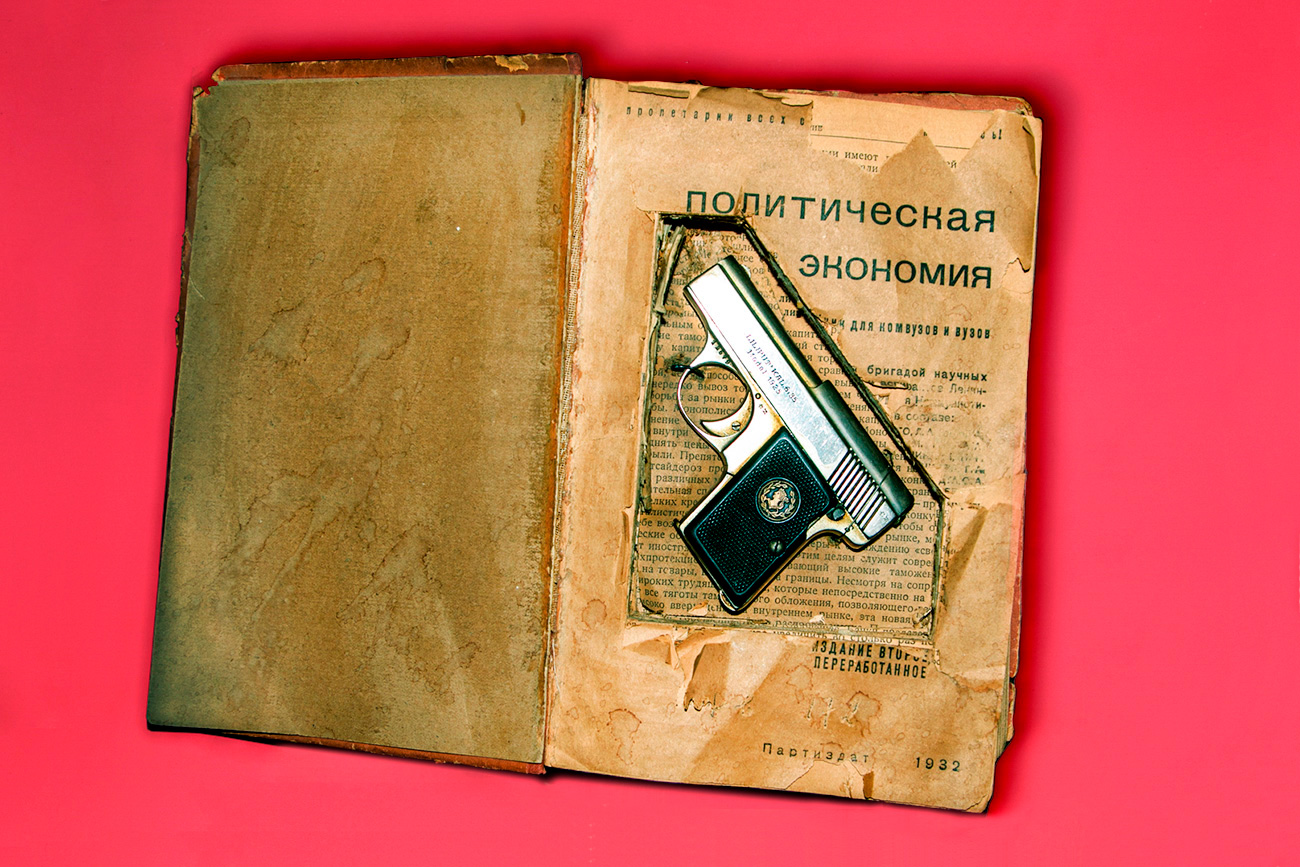
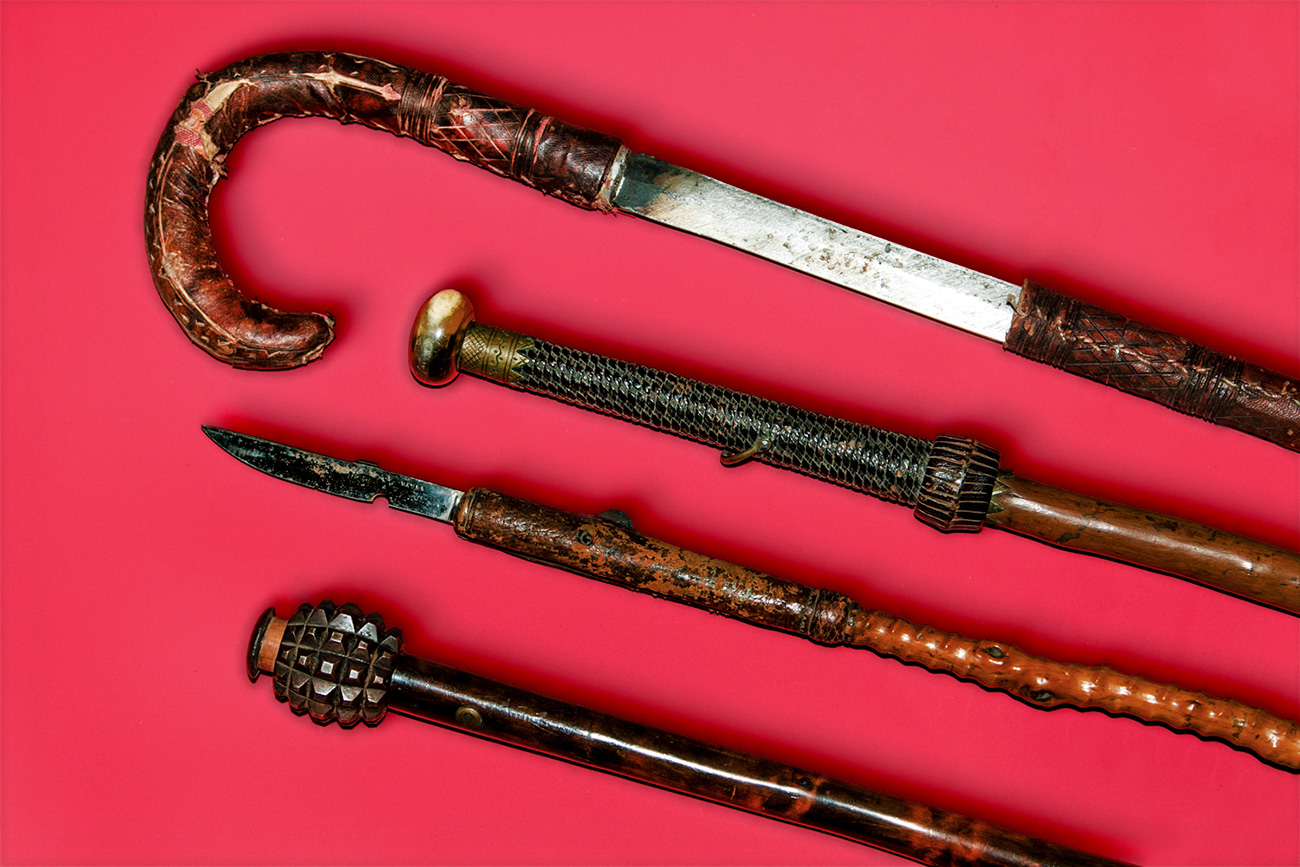 Canes with blades / Ilya Ogarev
Canes with blades / Ilya Ogarev
A cane with a hidden blade was a close combat weapon for foreign spies. The blade could be taken out like a sword from its sheath or be unfolded, turning the cane into a sort of lance. There were also models with heavy knobs, which spies could use like maces.
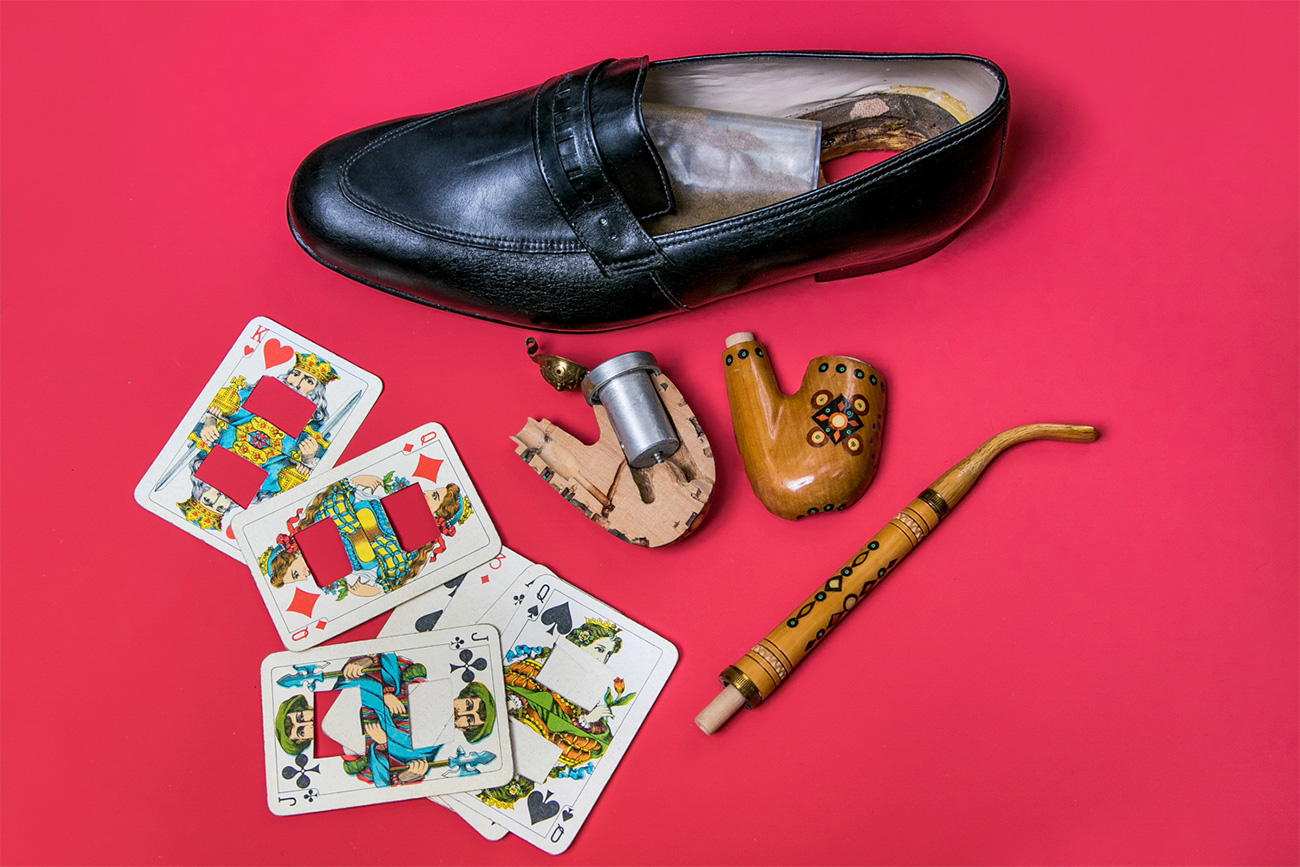 Caches for contraband and espionage / Ilya Ogarev
Caches for contraband and espionage / Ilya Ogarev
Such caches were primarily used for illegal trafficking of prohibited items, but were also suitable for foreign spies.
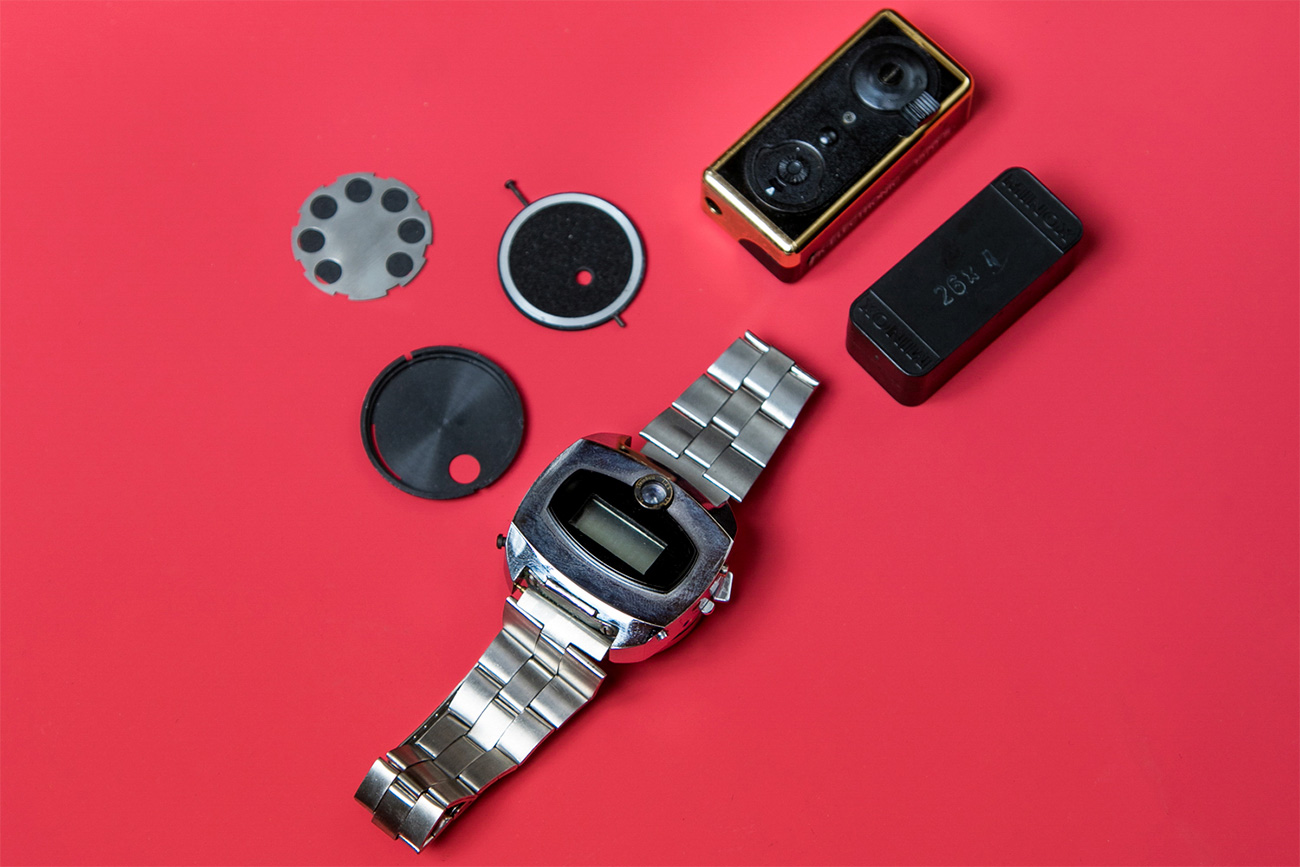 Cameras in watches and lighters / Ilya Ogarev
Cameras in watches and lighters / Ilya Ogarev
Cameras placed in small everyday objects like lighters and watches are among the most common spy accessories confiscated from foreign spies in the USSR and modern Russia.
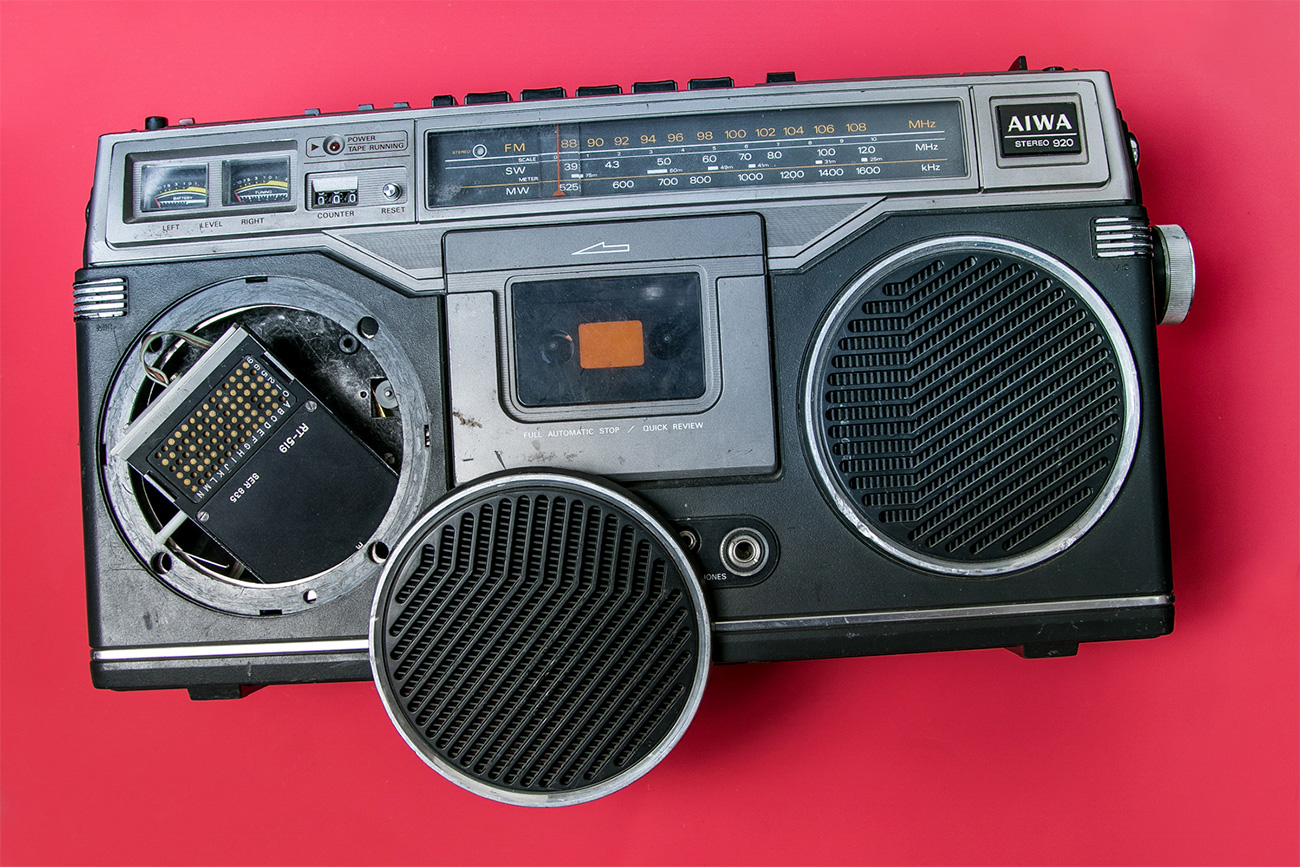 A transmitter placed in a tape recorder / Ilya Ogarev
A transmitter placed in a tape recorder / Ilya Ogarev
Often foreign reconnaissance specialists placed radio transmitters in tape recorders that helped them to communicate with their agents on Soviet territory.
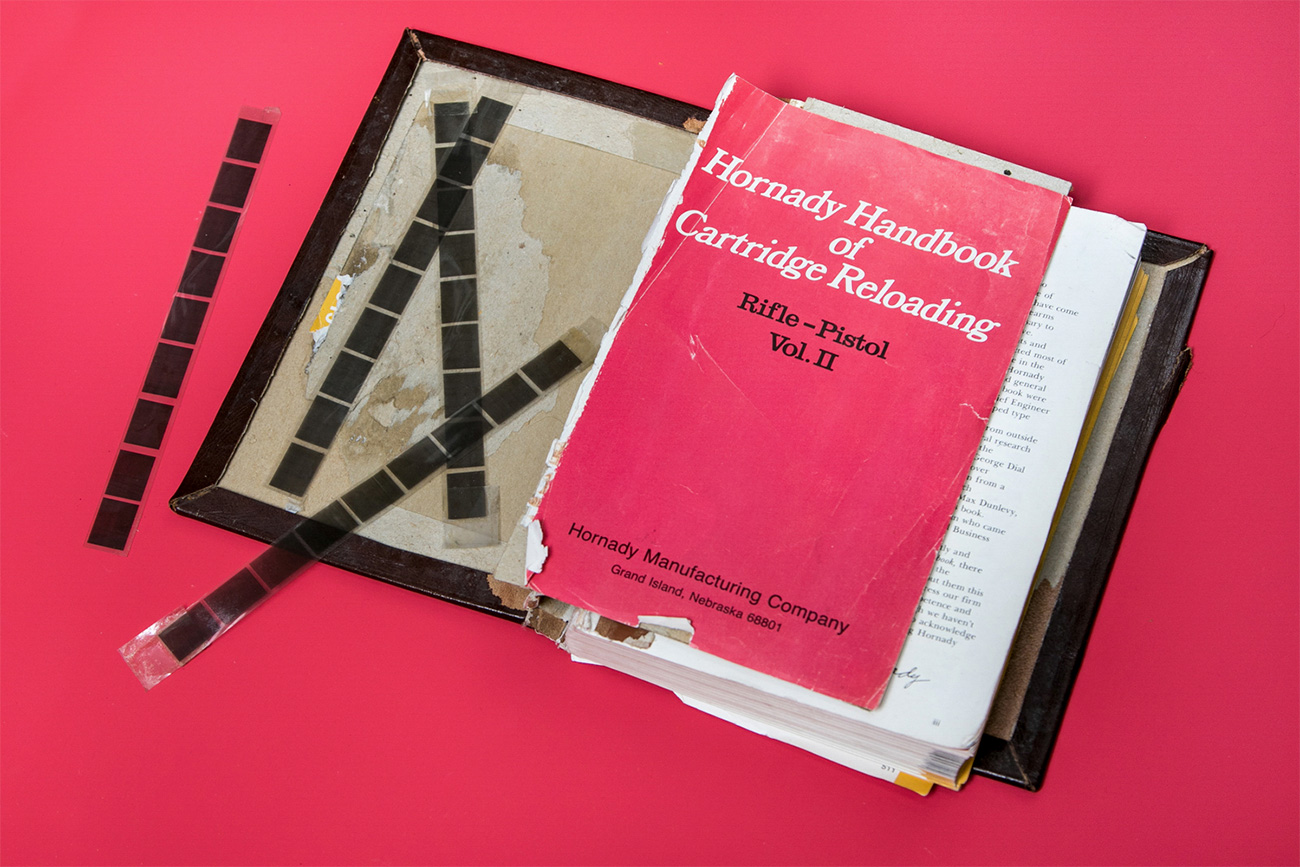 Books for deciphering coded messages / Ilya Ogarev
Books for deciphering coded messages / Ilya Ogarev
To decipher encrypted information foreign spies used books in foreign languages with unsuspecting content - from fairytales to novels to technical instructions.
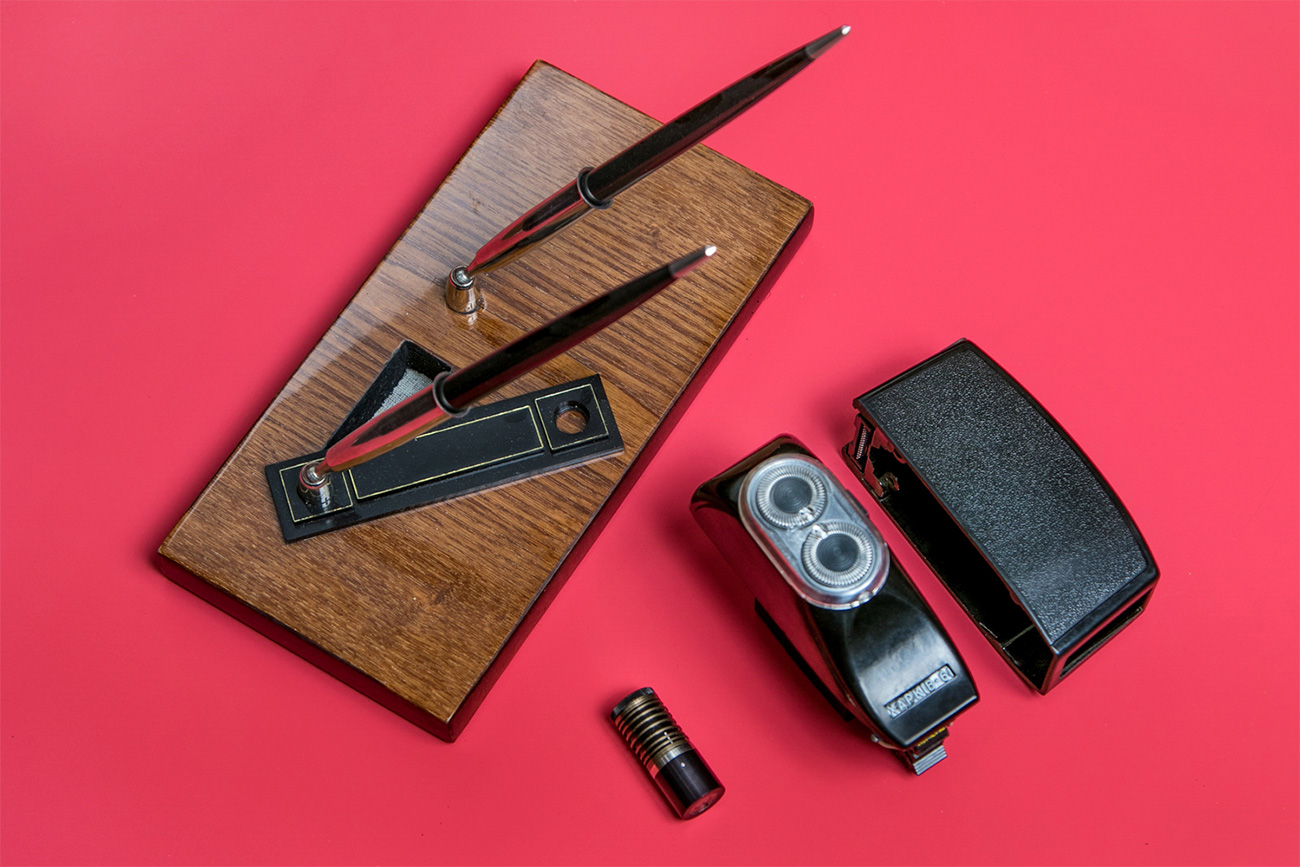 A cache in a stand for pens and a portable camera in a shaver / Ilya Ogarev
A cache in a stand for pens and a portable camera in a shaver / Ilya Ogarev
The most common everyday objects have been used for concealing special spy technology. Stands for pens contained secret caches and cameras were placed into shavers.
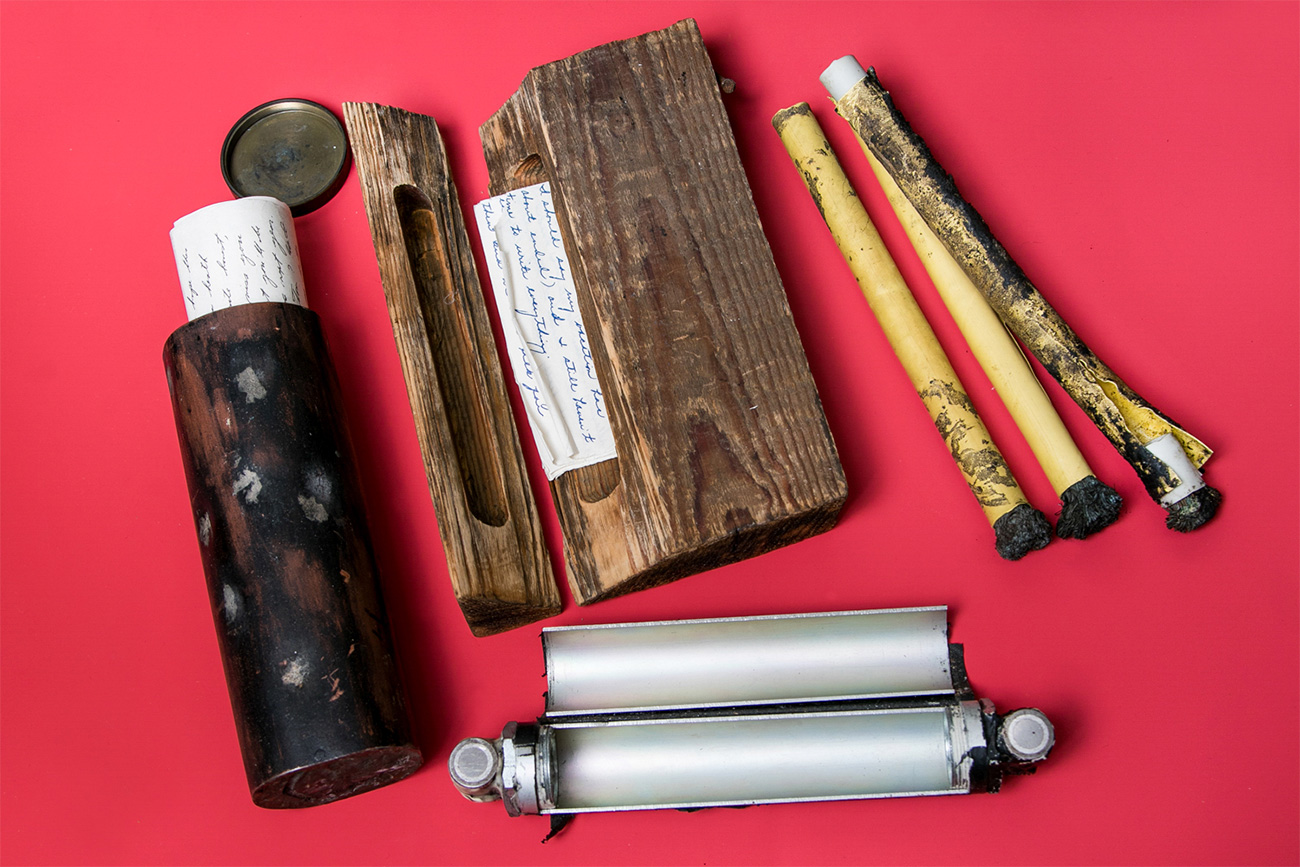 Containers designed to support communication with the agents through caches / Ilya Ogarev
Containers designed to support communication with the agents through caches / Ilya Ogarev
Via caches in containers made from various materials (plastic, metal, and wood) agents received their missions, cryptography means, and money.
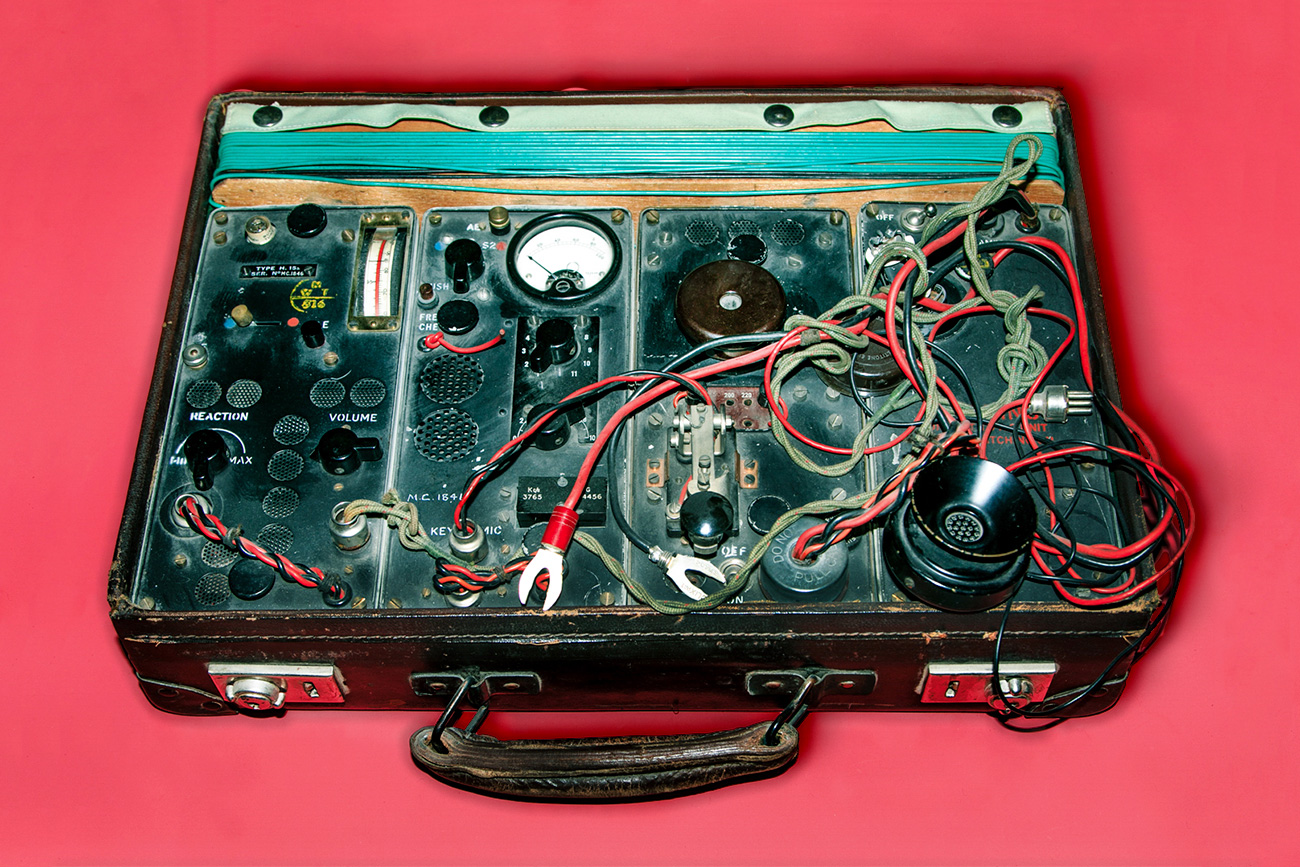 A walkie-talkie hidden in a briefcase / Ilya Ogarev
A walkie-talkie hidden in a briefcase / Ilya Ogarev
Walkie-talkies that spies used to transmit information and receive instructions from reconnaissance centers were usually compact and could fit inside a small briefcase.
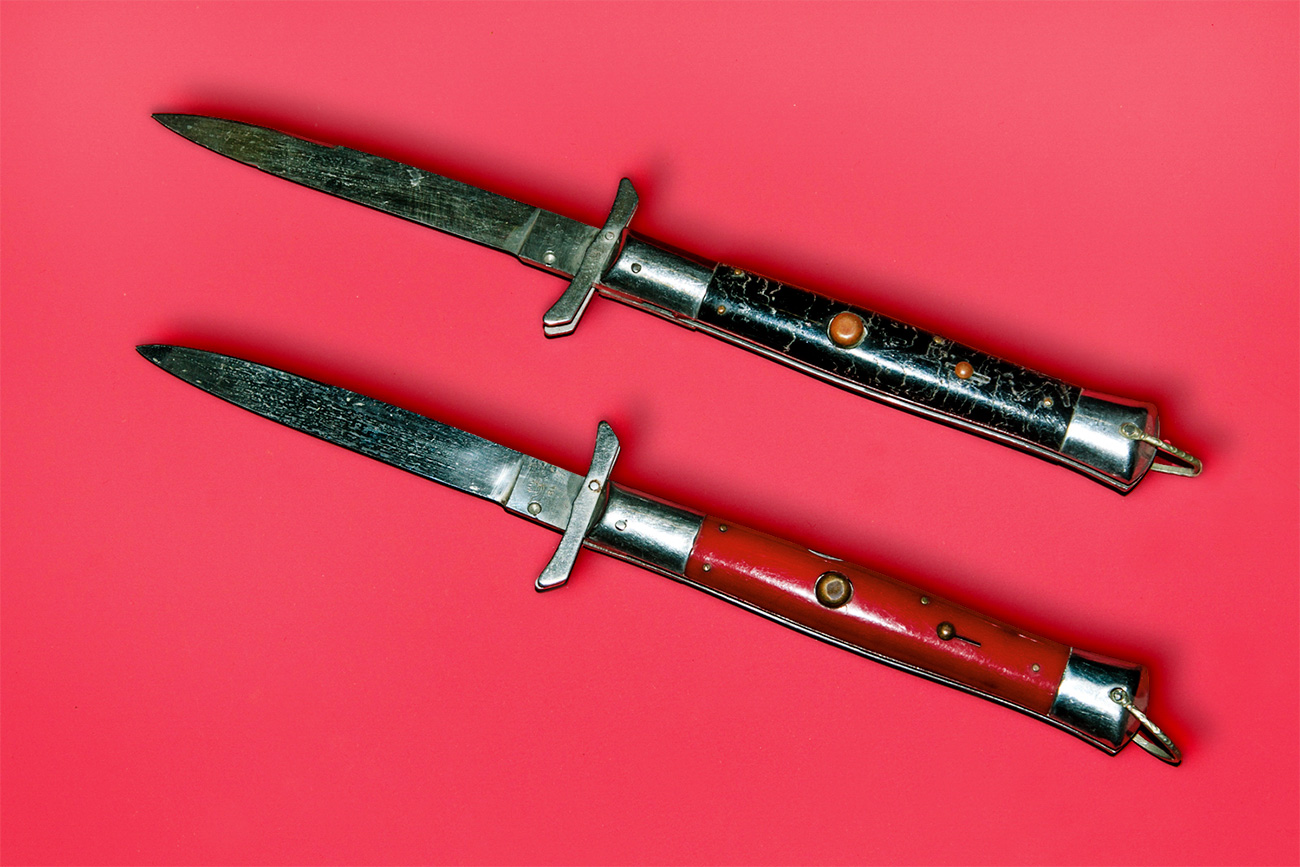 Knives with ejecting blades / Ilya Ogarev
Knives with ejecting blades / Ilya Ogarev
Knives with ejecting blades helped the spy protect himself from counterintelligence agents.
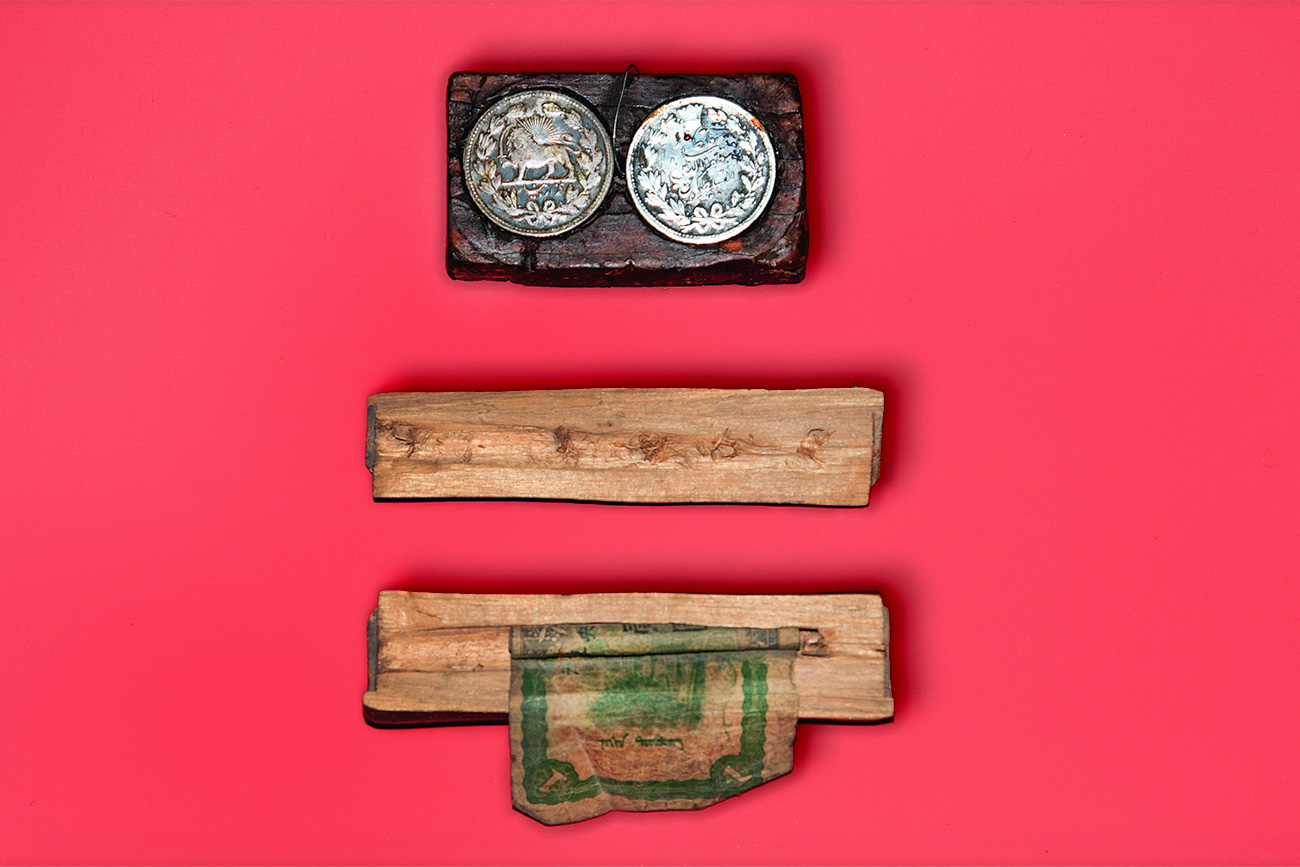 Caches / Ilya Ogarev
Caches / Ilya Ogarev
In caches made from blocks of wood spies would hide money, secret materials, cryptography instruments, and codes.
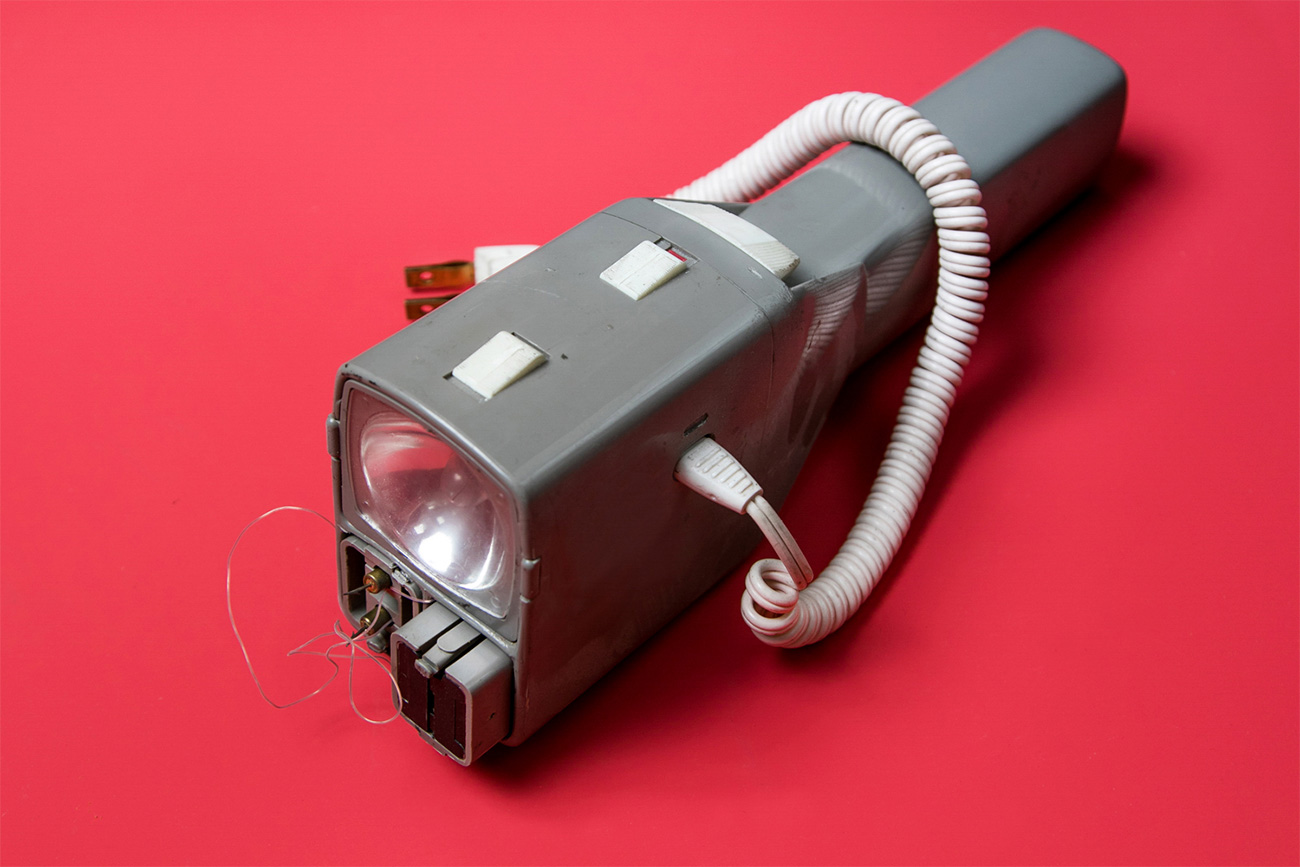 A stun gun placed in a flashlight / Ilya Ogarev
A stun gun placed in a flashlight / Ilya Ogarev
The stun gun/flashlight was a weapon for close combat used by foreign spies and saboteurs. The electric charge could render an enemy unconscious, helping the spy escape and hide.
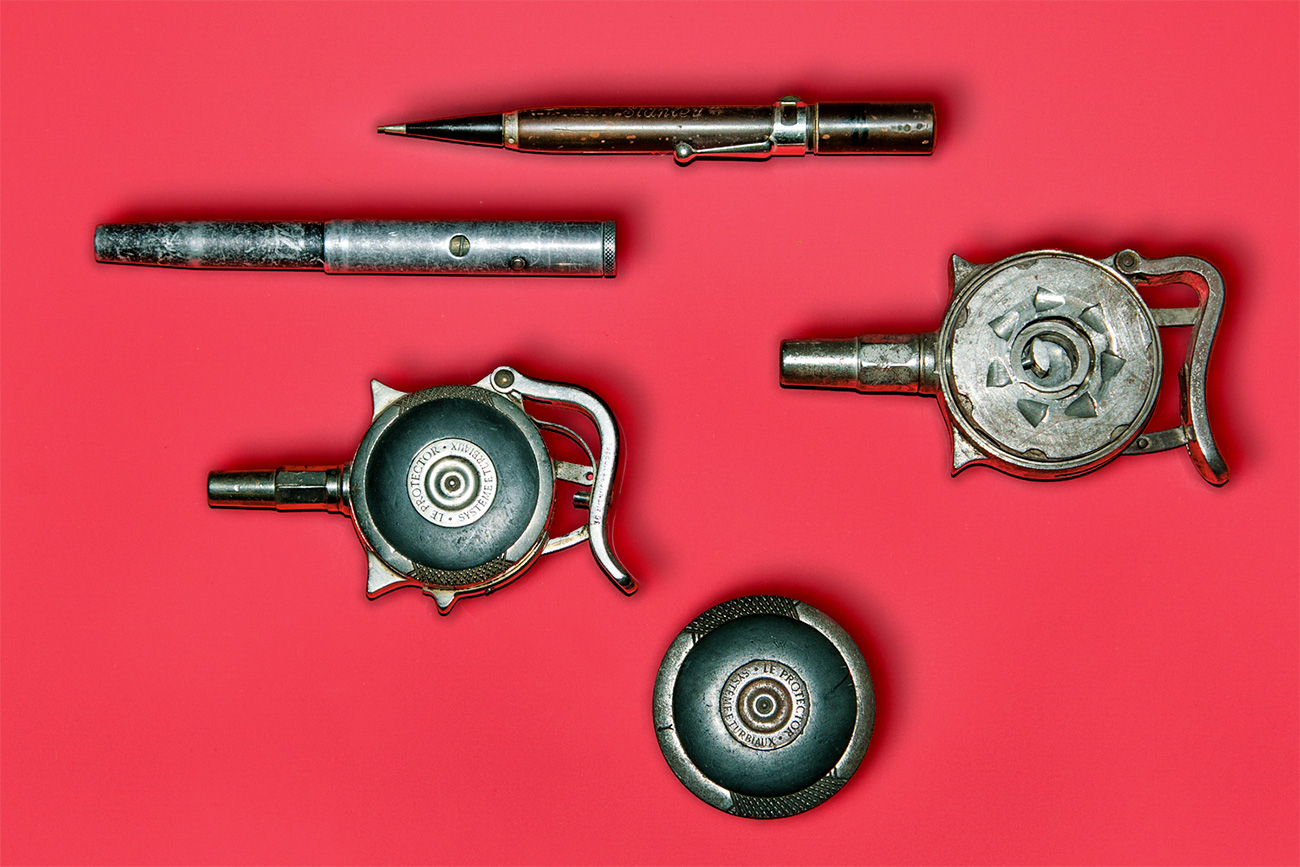 Guns-roulettes and pen guns / Ilya Ogarev
Guns-roulettes and pen guns / Ilya Ogarev
Guns in the form of the French-made "Le protector" roulettes had ten bullets. Compact and easily concealed, they could be held in the spy's hand or pocket. They were deadly at close range. Pen guns could only fire once.
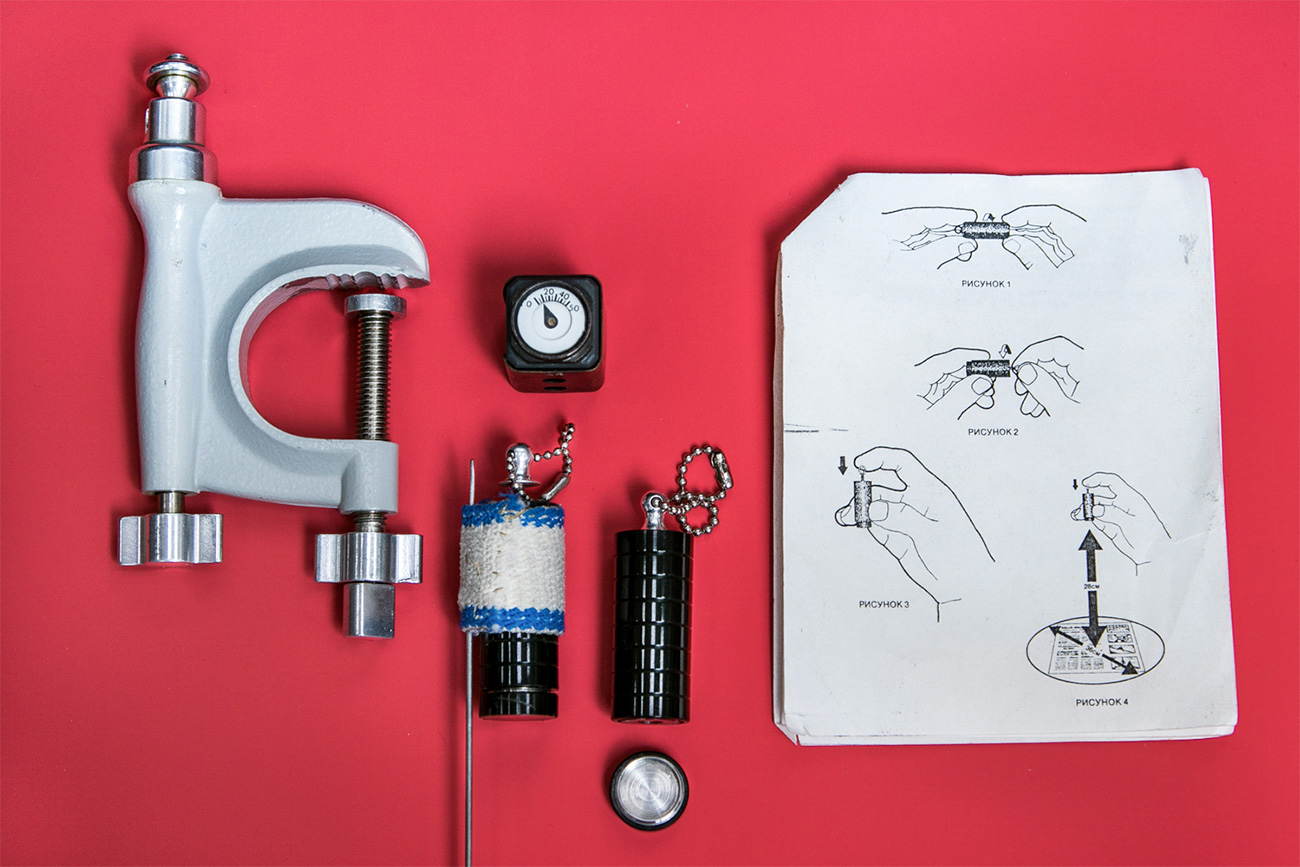 Mini cameras from CIA agent Adolf Tolkachev with manual / Ilya Ogarev
Mini cameras from CIA agent Adolf Tolkachev with manual / Ilya Ogarev
In 1985 KGB counterintelligence services arrested Phazotron (Russia’s largest developer of military radars) design engineer Adolf Tolkachev, who for several years had been passing confidential information about avionic developments to the CIA. In 1986 he was sentenced to execution by firing squad.
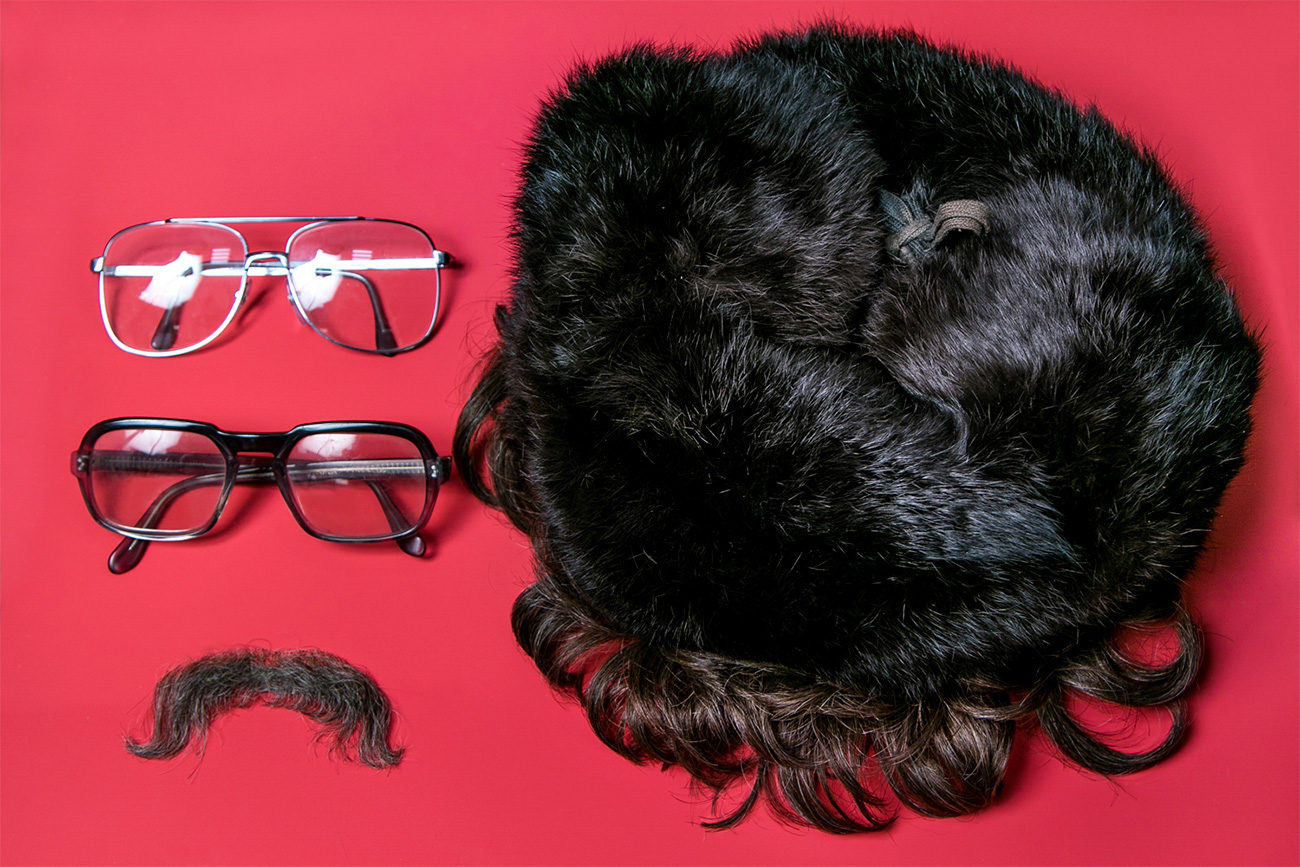 CIA employee Michael Sellers’ fake wig and moustache / Ilya Ogarev
CIA employee Michael Sellers’ fake wig and moustache / Ilya Ogarev
In March 1986, Deputy Secretary of the U.S. Embassy in Moscow and CIA staff employee Michael Sellers was arrested in Moscow while contacting his KGB counterintelligence agent. To change his appearance the American spy used a wig and fake mustache. After being detained, Sellers was expelled from the Soviet Union.
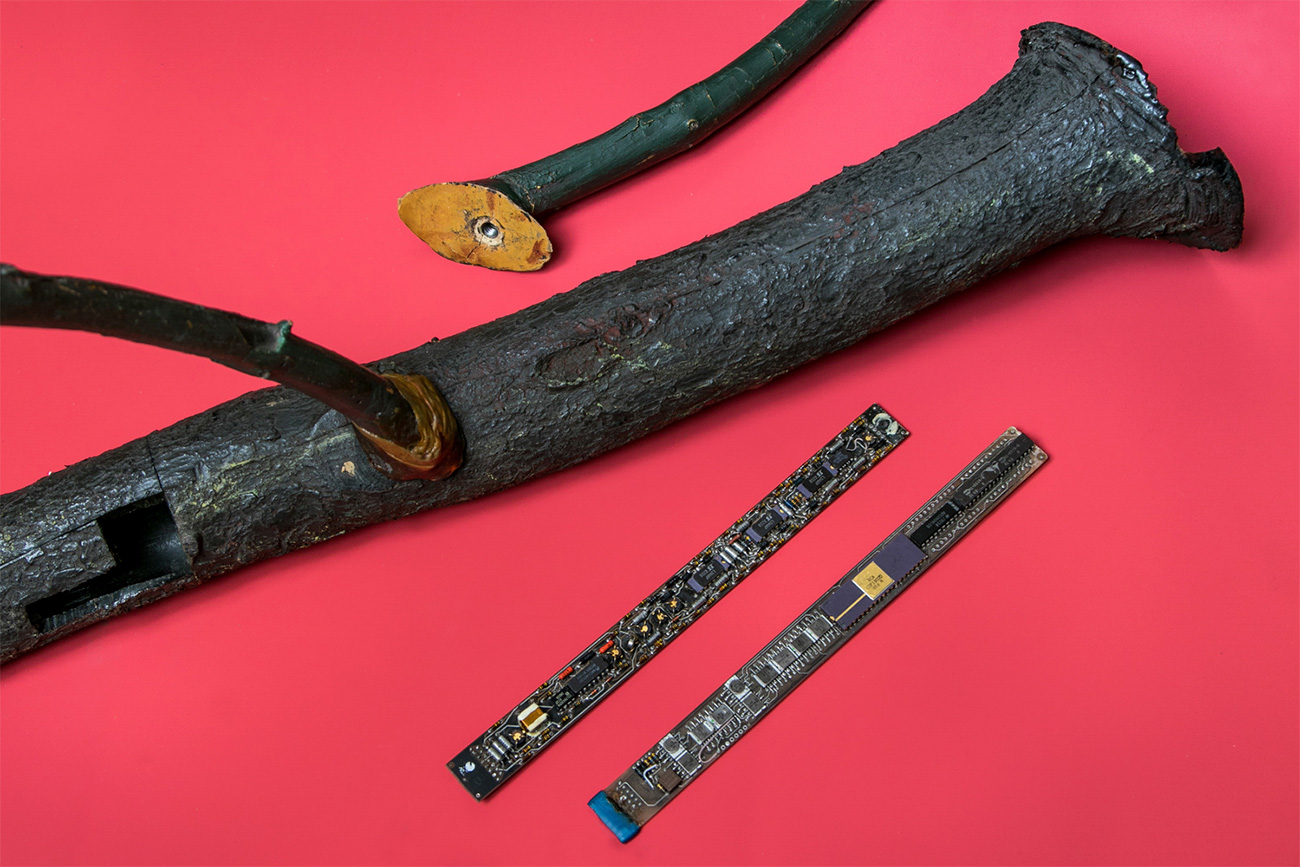 A device for transmitting reconnaissance information camouflaged as a tree branch / Ilya Ogarev
A device for transmitting reconnaissance information camouflaged as a tree branch / Ilya Ogarev
A device for transmitting reconnaissance information camouflaged as a tree branch was discovered by Soviet services near a military air base in East Germany. The information was received by NATO reconnaissance in West Germany.
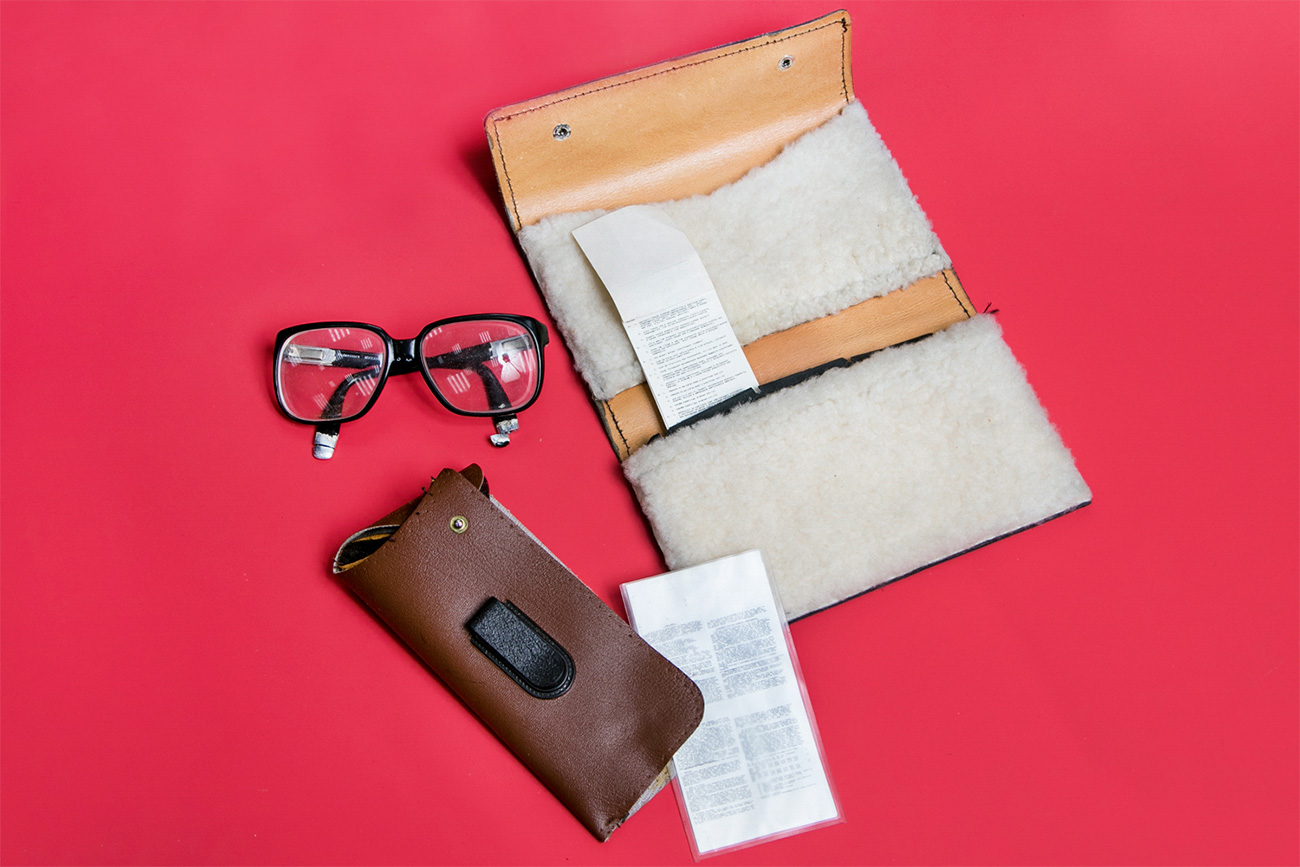 CIA agent Gennady Smetanin's glasses with built in vial of poison, and FBI and CIA agent Dmitri Polyakov's travel/fishing bag with secret pockets / Ilya Ogarev
CIA agent Gennady Smetanin's glasses with built in vial of poison, and FBI and CIA agent Dmitri Polyakov's travel/fishing bag with secret pockets / Ilya Ogarev
GRU Colonel Gennady Smetanin, who had offered his services to the CIA, was exposed and arrested by the KGB in 1985. He had glasses, the bridge of which contained a vial of poison. The case for the glasses also had instructions on how to contact the CIA. Smetanin didn’t get a chance to take the poison - as he was sentenced to execution by firing squad.
GRU Major General Dmitri Polyakov worked for the FBI and the CIA for more than 20 years. He was even able to obtain a good pension and destroy all evidence of his clandestine activities, except for one object - a travel/fishing bag (with hooks) with secret pockets for notebooks for deciphering codes. He had simply forgotten about it and was executed as a result in 1987.
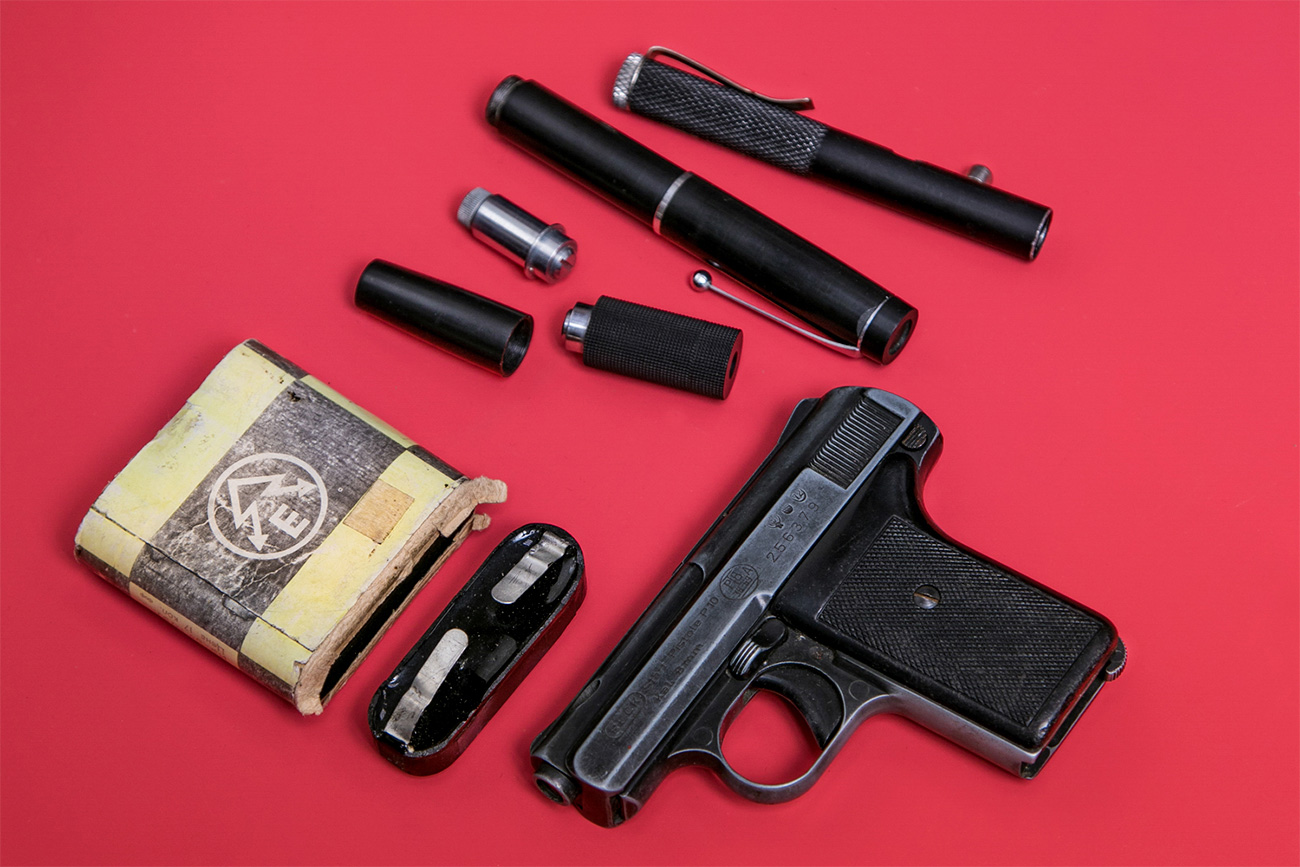 CIA agent and USSR Foreign Ministry employee Alexander Ogorodnik's spy equipment / Ilya Ogarev
CIA agent and USSR Foreign Ministry employee Alexander Ogorodnik's spy equipment / Ilya Ogarev
Deputy Secretary of the Soviet Embassy in Colombia Alexander Ogorodnik was recruited by the CIA at the beginning of the 1970s. He was exposed by the KGB counterintelligence services and after his arrest committed suicide in June 1977 in Moscow. The CIA did not know of Ogorodnik's death, which helped the KGB identify his Western contacts in Moscow.
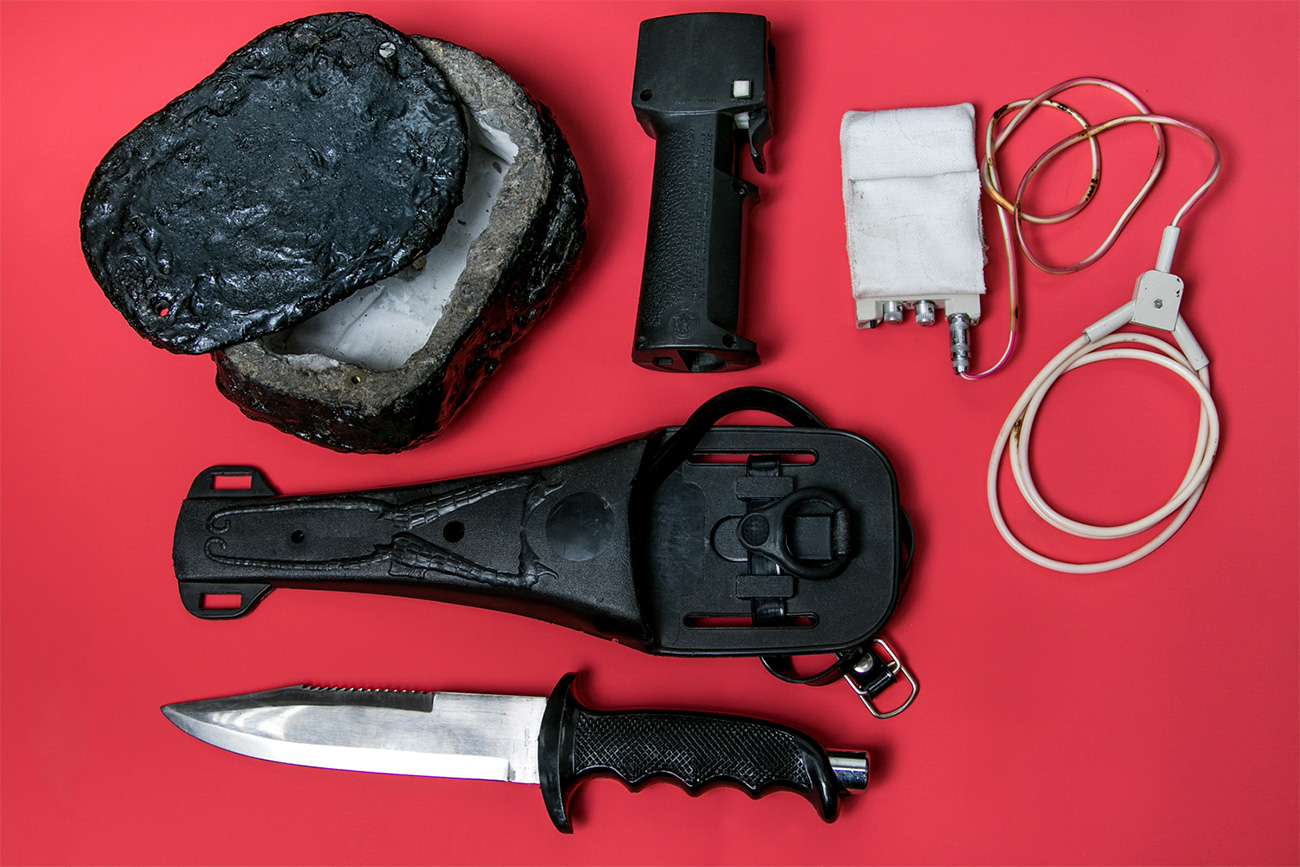 Alexander Ogorodnik's knife and the cache planted by Martha Peterson / Ilya Ogarev
Alexander Ogorodnik's knife and the cache planted by Martha Peterson / Ilya Ogarev
Martha Peterson, a CIA agent working in the embassy and therefore enjoying diplomatic cover, planted a container with a cache camouflaged as a stone for Alexander Ogorodnik on Moscow’s Krasnoluzhsky Bridge. Caught red-handed, Peterson was detained by the KGB and expelled from the country.
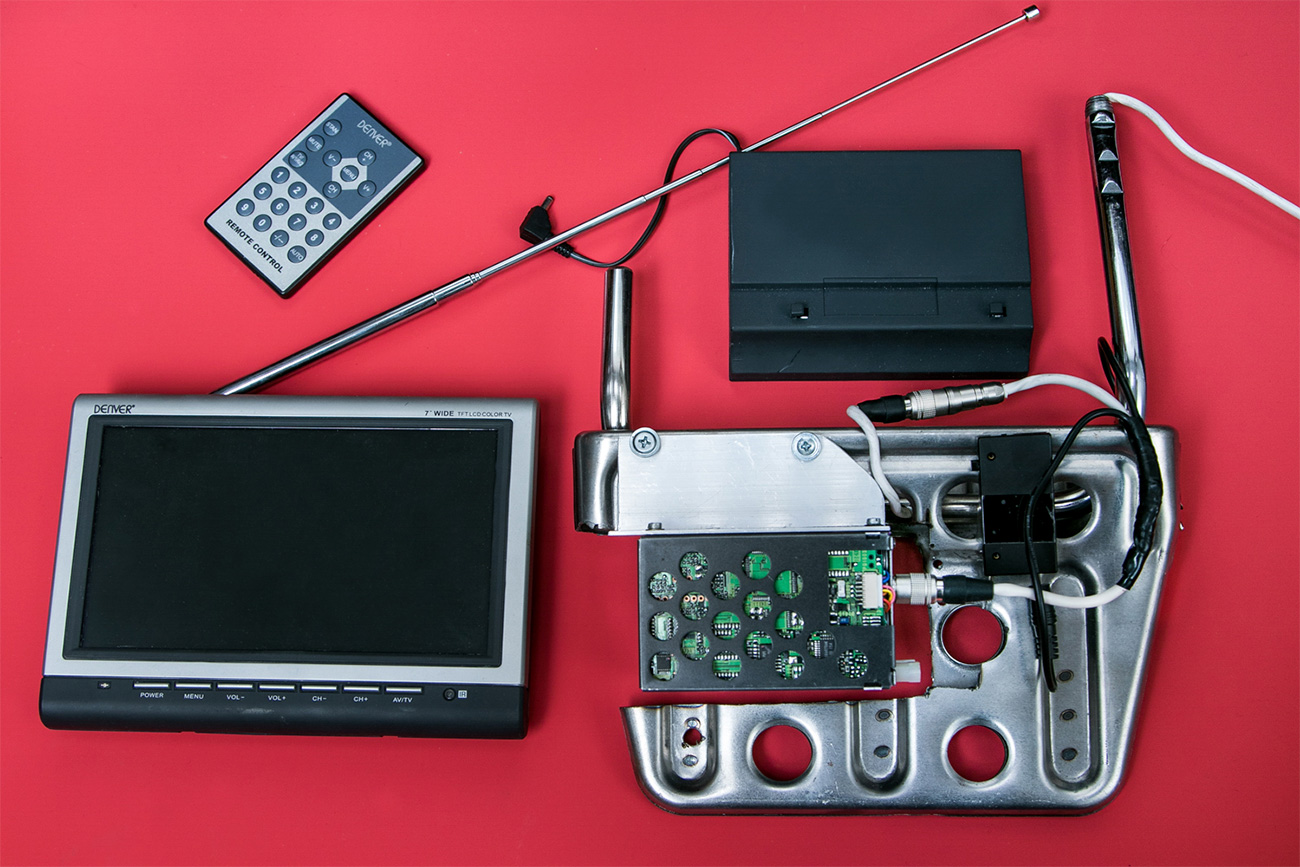 Equipment from the Estonian special services / Ilya Ogarev
Equipment from the Estonian special services / Ilya Ogarev
In the beginning of the 2000s, employees of the FSB Directorate in the Pskov Region noticed a suspicious car by the entrance. Inside they found recording equipment that belonged to the Estonian special services.
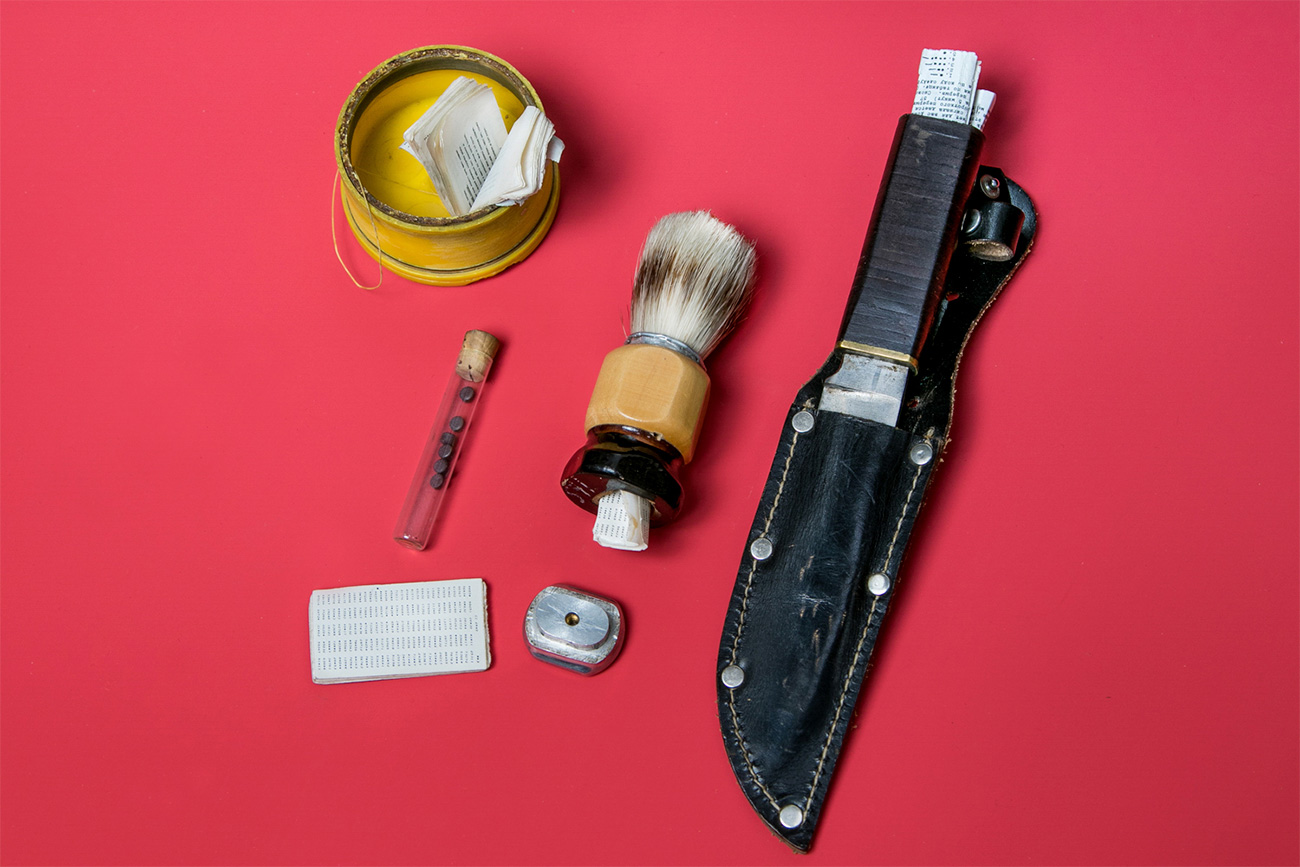 CIA agent Peter Popov's spy equipment / Ilya Ogarev
CIA agent Peter Popov's spy equipment / Ilya Ogarev
In 1959 the KGB at the USSR Council of Ministers exposed GRU Colonel Peter Popov, who had been recruited by the CIA in Austria. He had given the Americans information about Soviet reconnaissance in Austria and the first military exercises with the use of nuclear weapons in the USSR. In 1960 the Military Collegium of the Supreme Court of the USSR sentenced Popov to the highest level of punishment - execution by firing squad.
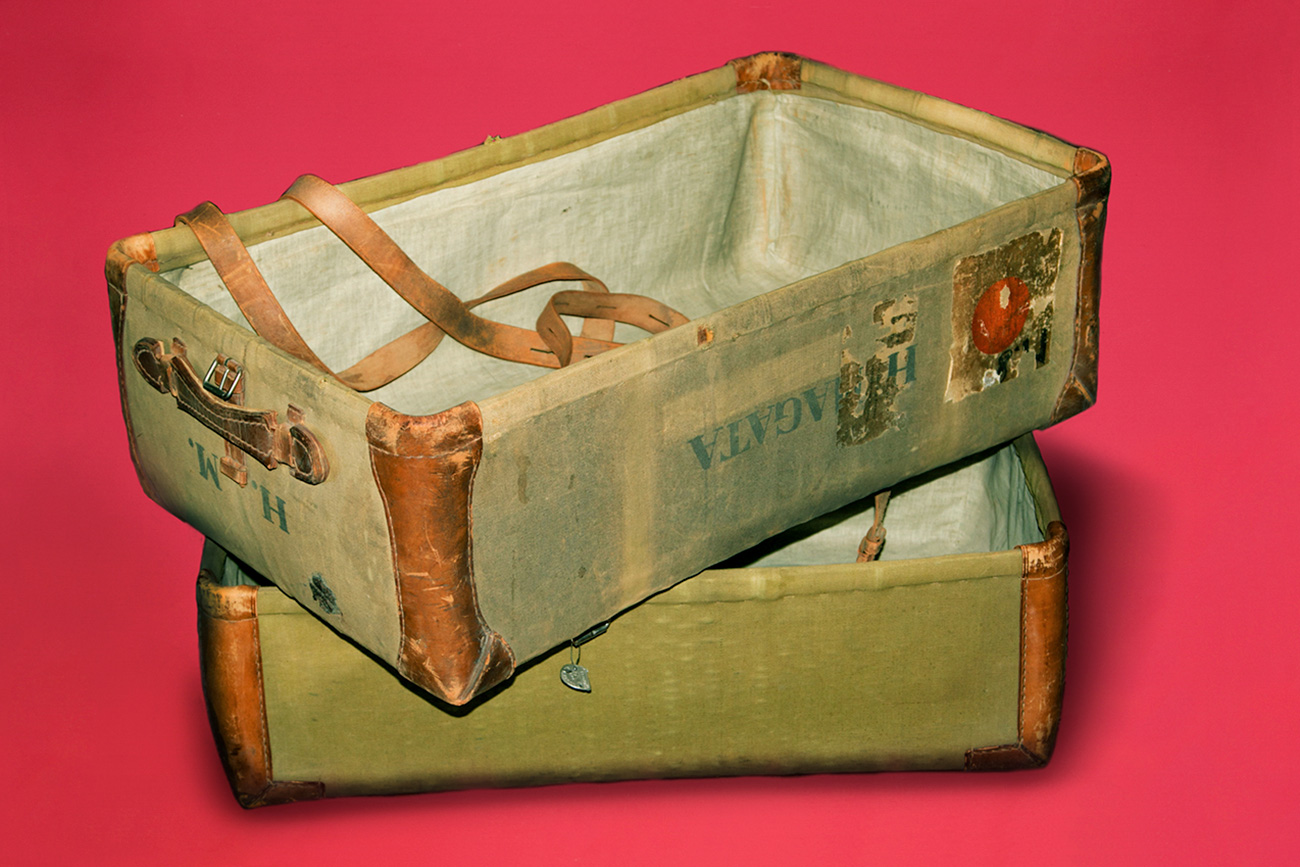 Japanese diplomat's suitcases - with a surprise inside / Ilya Ogarev
Japanese diplomat's suitcases - with a surprise inside / Ilya Ogarev
In December 1935, two female Soviet citizens tried to escape the country in the suitcases of a Japanese diplomat. The diplomat's personal belongings were not searched. However, due to the cold weather and the long delay at the Soviet-Polish border, one of the women exposed herself - and in turn revealed the other. Both were detained.
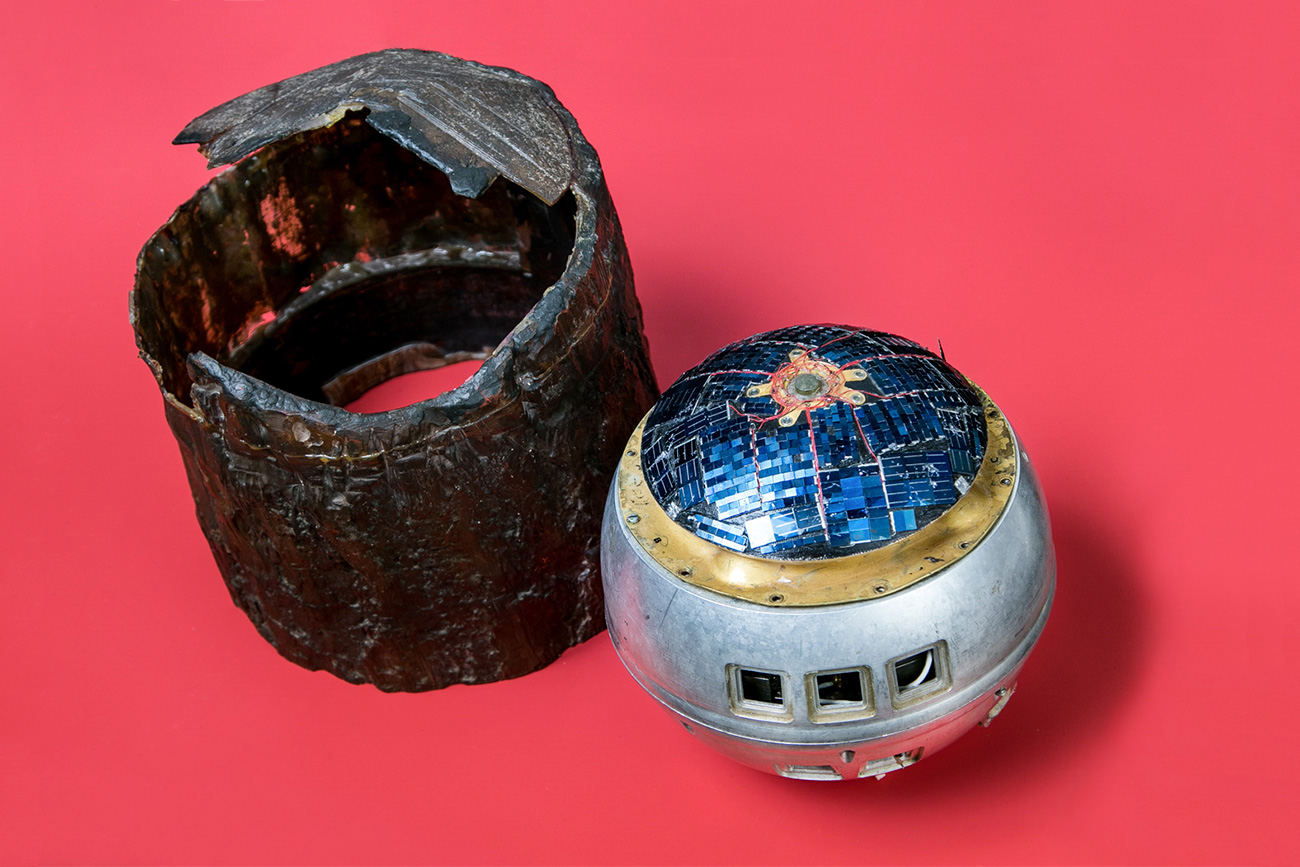 A device for transmitting reconnaissance information camouflaged as a tree stump / Ilya Ogarev
A device for transmitting reconnaissance information camouflaged as a tree stump / Ilya Ogarev
Once the KGB counterintelligence services discovered an American high-tech recording device camouflaged as a tree stump. It was located near an anti-missile defense base near Moscow. It recorded the parameters of the military technology and transmitted the information to a reconnaissance satellite.
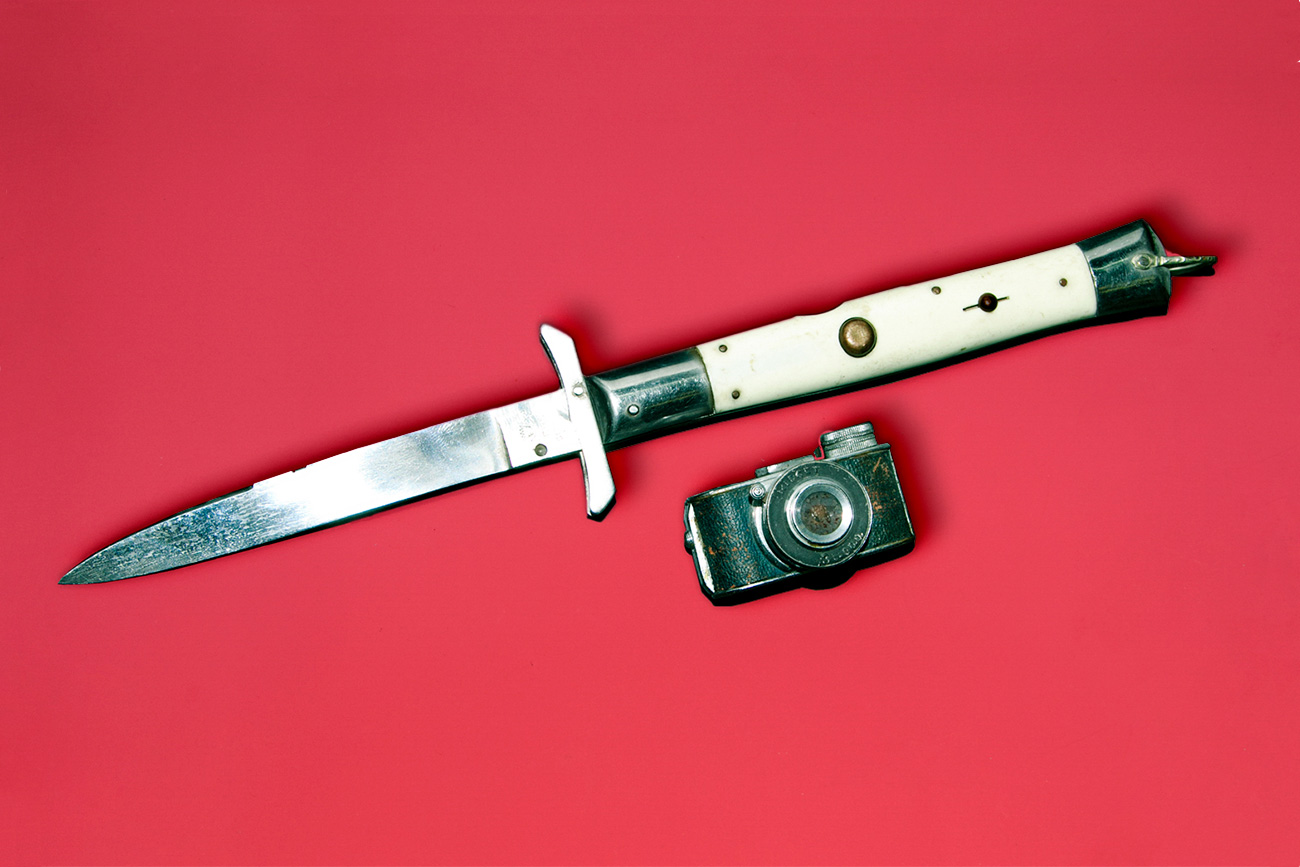 Mini camera belonging to a Japanese spy / Ilya Ogarev
Mini camera belonging to a Japanese spy / Ilya Ogarev
Soviet counterintelligence agents confiscated a mini camera from a Japanese spy in the Far East in 1942.
 British and American agent Oleg Penkovsky's spy equipment / Ilya Ogarev
British and American agent Oleg Penkovsky's spy equipment / Ilya Ogarev
In October 1962, the KGB counterintelligence services at the USSR Council of Ministers exposed MI6 and CIA agent GRU Colonel Oleg Penkovsky. The 5,000 or so photographs of USSR weapons systems, which he had taken with a compact Minox camera, were of enormous value to Western reconnaissance. In May 1963 Penkovsky was sentenced to execution by firing squad.
 A gun hidden inside a book / Ilya Ogarev
A gun hidden inside a book / Ilya Ogarev
A textbook about political economy (fascinating read!) with a Hungarian Liliput Kal 1925 6.35-calibre pistol hidden inside was confiscated from a German spy shortly before the beginning of WWII.
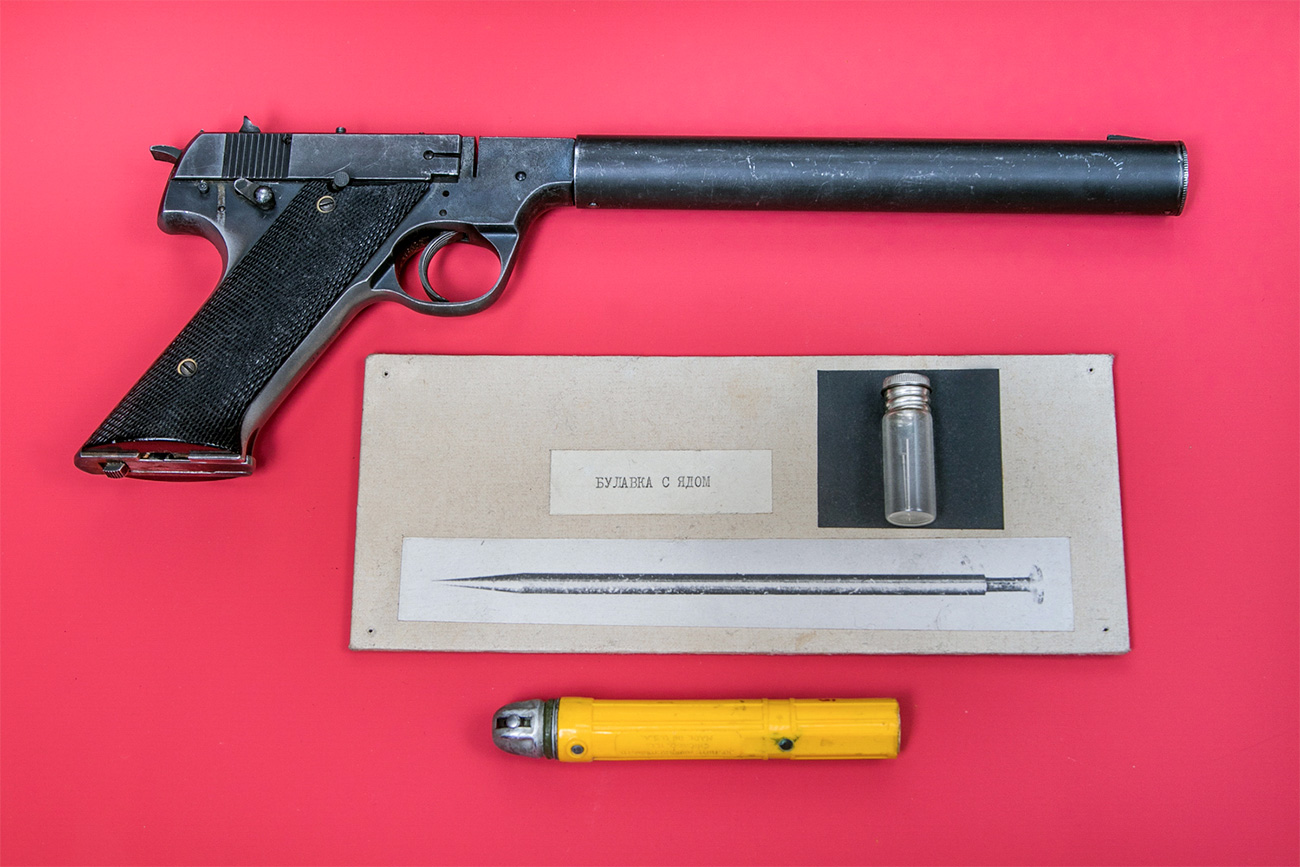 American spy pilot Francis Powers' poison-tipped pin, flashlight, and a gun with silencer / Ilya Ogarev
American spy pilot Francis Powers' poison-tipped pin, flashlight, and a gun with silencer / Ilya Ogarev
U.S. pilot Francis Gary Powers, who was conducting a reconnaissance flight in the U-2 spy plane over Soviet territory was shot down on May 1, 1960 by a surface-to-air missile near Sverdlovsk (present day Yekaterinburg).
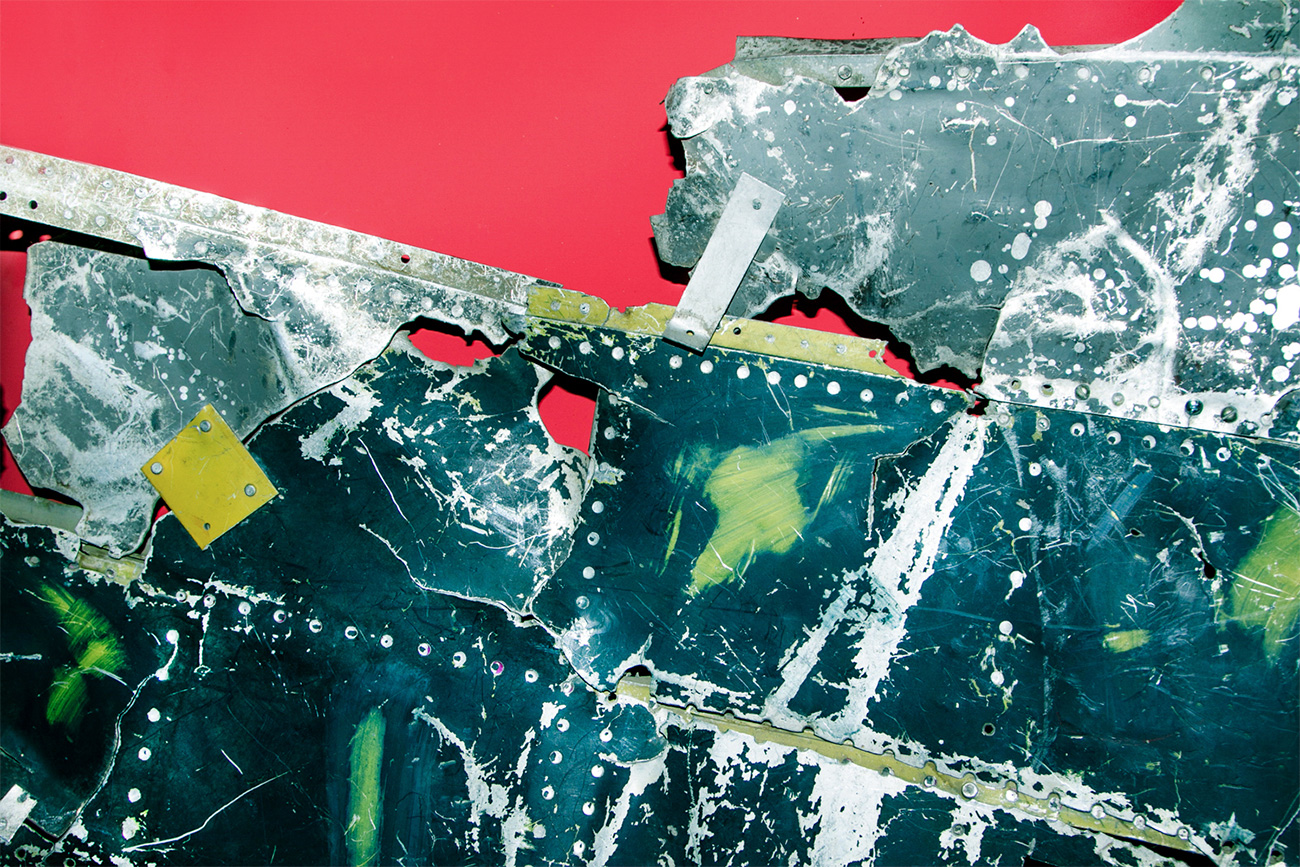 The fuselage lining of the American U-2 reconnaissance plane / Ilya Ogarev
The fuselage lining of the American U-2 reconnaissance plane / Ilya Ogarev
The pilot was able to eject himself. When he was captured Soviet agents discovered a pin with a poisoned tip, a flashlight, and a High Standard HDM pistol with integrated silencer - a U.S. special services weapon. On Feb. 10, 1962 Powers was swapped for Soviet spy Rudolf Abel, who had been arrested by the U.S.
RBTH would like to thank the Russian FSB Central Border Museum for its assistance in organizing the photographs for this article.
If using any of Russia Beyond's content, partly or in full, always provide an active hyperlink to the original material.
Subscribe
to our newsletter!
Get the week's best stories straight to your inbox